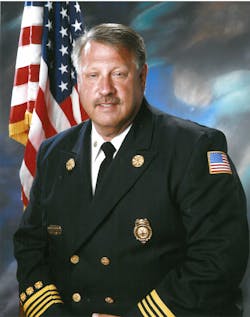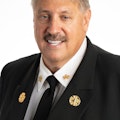When I was just a small kid growing up in the compact and neatly lined brick homes of south St. Louis, I can remember when there would be an accident or some other incident in the neighborhood in which someone was hurt or ill. One incident just down the street from my house happened when a car ran up on a sidewalk and hit a young girl. It trapped her under the car. Soon, about 20 people were attempting to lift the car off the girl, and they ultimately succeeded. Several tended to her while they awaited emergency personnel to arrive. To me, she looked severely injured. I was probably less than 10 years old, and all I could do was watch the action unfold in front of me. Eventually, some older man yelled at us kids to get back.
Not long after, police cars arrived, and a unique police vehicle with the slang name of a “paddy wagon” showed up. The vehicle looked like a van with two back doors and was multi-purpose. It was used to transport prisoners and injured patients. There was a canvas stretcher in the back that had to be hand-carried as a litter using two to four people. The police officer who drove the paddy wagon had no medical training, and no one was in the back of the paddy wagon with the patient during the transport. The police officer would just drive as fast as he could to a hospital. Knowing what I know now, I suspect many people bled to death, choked on their own blood, became paralyzed or succumbed to a variety of other maladies from improper movement and no treatment.
That was back before the days of EMS. Eventually, the city of St. Louis embraced what many other communities did in the 1970s with the advent of paramedics and proper treatment in the field before and during transport.
Railway incident
Recent recommendations from the National Transportation Safety Board (NTSB)—a division of the federal government that is charged with investigating civil airplane accidents and other significant accidents involving transportation, including railroad, highway and marine—are somewhat disturbing. Its role should be to determine the probable cause of accidents and supposedly issue safety recommendations aimed at preventing future accidents; however, some of its recent recommendations regarding a railroad accident have suggested that we go back 40+ years and start transporting patients to the hospital in police vehicles.
The recommendations were made in the NTSB report about the Amtrak passenger train crash that occurred in Philadelphia on May 12, 2015. The train was on a curve that had a speed restriction of 50 mph or less. The train was doing 106 mph. As the train entered the curve, the locomotive engineer applied the emergency brakes. In just a few seconds, the train, with one locomotive and seven passenger cars, derailed. There were a total of 245 passengers, five on-duty Amtrak employees and three off-duty Amtrak employees on board. Eight passengers were killed, and 185 others were transported to area hospitals.
Of the 185 people transported to the hospital, only 24 were taken to a hospital by an ambulance. The other 161 patients were transported by police cars and public transportation buses. The police used their “scoop and run” policy, which normally applies to shooting and stabbing victims. Firefighters did complain in interviews to the NTSB that police cars had blocked access to the crash site and that police had refused their request to triage patients.
As a result of no coordination of patient transport, some hospitals were overloaded with victims while others received no patients at all.
One recommendation to the Mayor of Philadelphia said, “Facilitate the collaboration among the Philadelphia Police Department, Philadelphia Fire Department, and Office of Emergency Management to develop a plan that effectively integrates police transport of patients into the emergency medical response plans for large mass-casualty incidents and to practice the plan periodically, including at least one full-scale drill every 3 years.” A second recommendation to national fire and police organizations said, “Educate your members regarding the details of this accident, including the lessons learned from the emergency medical response, and the potential utility of integrating police transport of victims into mass-casualty incident response plans.”
Full circle?
They say eventually everything comes full circle. But revisiting 40-year-old transport tactics, with all the advancements made in properly treating and transporting patients in the field, seems like we’re going back to what I watched on the streets of St. Louis in my youth. Recommendations like this coming from a government agency that focuses on safety is even more disconcerting.
About the Author
Gary Ludwig
GARY LUDWIG has served in three fire departments over his career: St. Louis, Memphis, and Champaign, IL. His fire, EMS and rescue career spanned a total of 46 years, and he has been a paramedic for over 44 years. Ludwig served as president of the International Association of Fire Chiefs in 2019-20. He has a Master’s degree in Business and Management, has written over 500 articles for professional fire and EMS publications and is the author of seven books.
Connect with Gary
Email: [email protected]
Facebook: Gary Ludwig
Twitter: @ChiefGaryLudwig
Website: garyludwig.com

